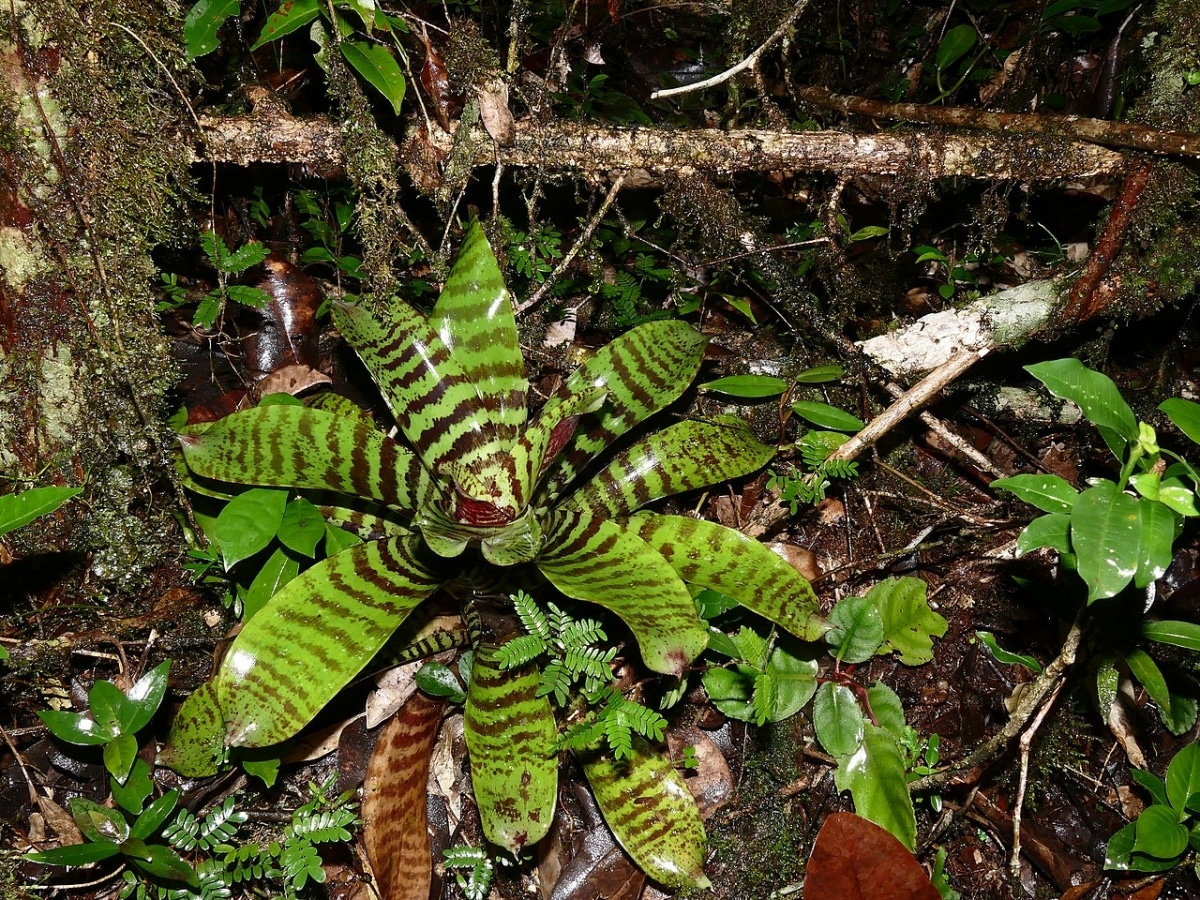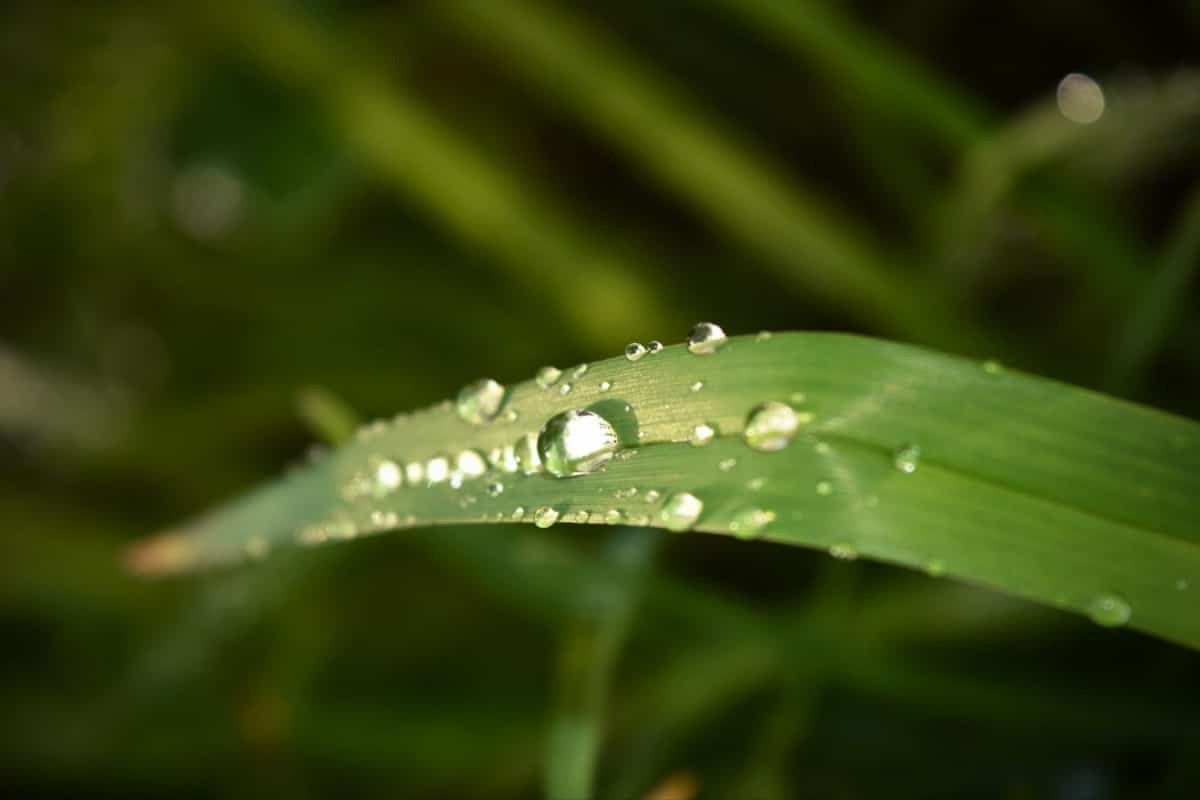
Image - Wikimedia / Bernard DUPONT
One of the prettiest bromeliads and, by the way, the easiest to care for is the vriesea splendens. The colors of its leaves, and the elegance of its flower, are the most interesting, since you can use the plant to embellish any room in your house, or the patio or garden.
So whether you are thinking of bringing an exotic and tropical touch to your home, and therefore also to your life, we advise you to get one vriesea splendens. Now we will tell you everything you need to know about this species.
Where does it originate from? vriesea splendens?

Image - Wikimedia / Bernard DUPONT
It is a species of epiphytic bromeliad native to Venezuela, Suriname, Trinidad and Guyana. It can be found in humid tropical forests, from sea level to 700 meters of altitude.
It usually grows on the branches of trees, but it also grows on rocks and sometimes also on the ground, everything will depend on where the seed germinates, as well as the conditions in the area.
What are their characteristics?
It is an epiphytic plant grows forming a rosette of basal leaves whose approximate length is about 40 centimeters and they can measure about 10 centimeters wide. These are dark green with much lighter green stripes.
Its flowering time is summer and early fall.. The flower is an inflorescence that resembles the feather of the Indians, which is why one of the common names of this species is, precisely, Indian feather. Other widely used names are: sword of fire, vriesia or bromeliad.
Regarding the total height of the plant, it must be said that does not exceed 30 centimeters high. In addition, its root system (that is, the roots) do not grow much, so it is at least interesting to keep it in a rather small pot, about 15 centimeters in diameter and more or less the same height; or in a garden together with other similar plants.
Indian feather care guide

Image - Wikimedia / Chhe
If you ever get one vriesea splendens, it will be very necessary that you learn what are the basic care that you have to give it. And it is that, being a plant of tropical origin, It must be taken into account that its resistance to cold is very, very low, practically nil..
This means that you won't have to leave it outside during the winter it's cold. In fact, if the temperature drops below 10ºC at any time, the ideal is to stay indoors until spring returns and the minimum temperature begins to exceed XNUMX degrees.
But not only do you have to worry about temperatures, but you will also have to worry about other things:
Location
Where should I put the Indian pen? This is the first question we will have to ask ourselves, because the ideal is to find a place for it and leave it there always. And it is that the plants do not like that we are moving them from one place to another. Therefore, what we will do is decide if we are going to have it indoors or outdoors, or if we will have it outside while it is hot but then we will put it inside.
Interior
If we choose to have it inside the house, It is important that we put it in a room where there are windows through which a lot of natural light enters. This is a bromeliad that needs that, it needs a lot of light to grow; but beware: never expose it to direct light, or else it will burn.
Likewise, you have to find a room where there are no drafts, such as those generated by the fan or air conditioner. What these do is dry out the environment, with which the plant will begin to have brown tips; and if you don't change places, you will end up losing the page.
Body exterior:

Image - Wikimedia / Forest & Kim Starr
Outdoors will be in shadow, but it must be a place where there is a lot of clarity; that is, it should not be placed in a dark area, otherwise it will not survive.
Likewise, it is important to avoid placing it near larger plants, as these would give it shade, and by doing so they would force it to grow in an unnatural way (for example, it could lean to one side to capture more light; and in more serious cases, its leaves would lose color).
Irrigation
Now vriesea splendens You have to water it several times a week while the summer lasts and it's hot. In those months, the land dries quickly, so we will have to be vigilant to water as soon as we see and notice that it has already dried a lot. But you have to be careful not to water it too often, as too much water could be fatal.
In order not to run that risk, what we will do is introduce a stick to the bottom; and if we see that extracting it comes out clean and dry, then we will water the bromeliad. To do this, we will have to use rainwater, or poor lime. Bottled water suitable for consumption will also serve us.
Humidity
As it is a plant native to the rain forest, requires high air humidity. Therefore, if we live on an island or near the coast, we will not have to worry about it, but if on the contrary we are in an area where the humidity is very low, then we will have to sprinkle it with water without lime every day.

Of course, I insist, we will only do this if the air humidity remains below 50%. Never (and when I say never means never) we will have to spray a plant with water when it lives in an area where the humidity is always high, because otherwise what we will achieve is that it is filled with fungi.
Subscriber

Image - Wikimedia / Alejandro Bayer Tamayo
It is highly recommended to pay the vriesea splendens with compost or soft fertilizer, like the one you put on orchids (on sale here). It will be paid in spring and summer, following the manufacturer's instructions.
Rusticity
Since he can't stand the cold must be protected if temperatures drop below 5ºC, although it is preferable to bring it home as soon as the thermometer starts to read 15ºC or less.
La vriesea splendens It is a very beautiful type of bromeliad, and as we have mentioned, quite easy to care for.